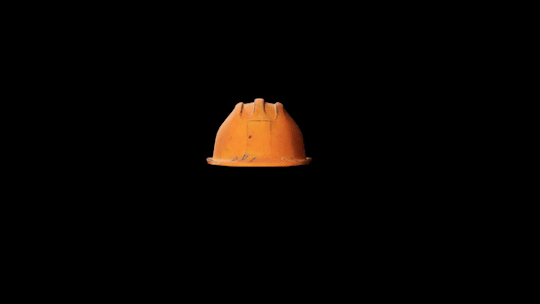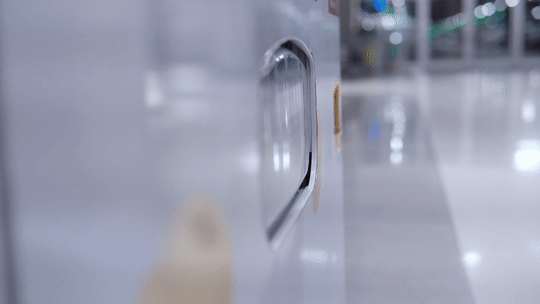The American National Standards Institute (ANSI) empowers its members and constituents to strengthen the U.S. marketplace position in the global economy while helping to assure the safety and health of consumers and the protection of the environment.
Don't wanna be here? Send us removal request.
Text
As Clear as Glass

For a change, look at glass (or plastic), not through it. In small lettering, you might see some letters and numbers. Markings like “ANSI Z97.1-2015” and “American National Standard Z97.1-2015” denote compliance with testing requirements that assure the glazing materials used in buildings are safe.
#glass#glazing#plastic#ansi#standards#standard#iso#construction#osha#building#building code#materials#window#fenestration
0 notes
Text
Piping & Instrumentation Diagrams (P&IDs)

It's not always easy to know where piping systems go or contain, so piping & instrumentation diagrams show the interconnection of process equipment. Standard symbols can be found in ANSI/ISA 5.1-2024. These drawings can represent:
-centrifugal pumps
-vacuum pumps
-gear pumps
-controllers
-controller valves
-pressure indicator control
-converters
-condensors
-furnaces
-boilers
-motors
-reducers
-separators
#piping#piping and instrumentation#p&id#industry#standard#standards#ansi#construction#osha#engineerlifestyle#engineerlife#engineering
1 note
·
View note
Text
CAUTION, DANGER, WARNING

Recognize this symbol? ANSI Z535.4, the American National Standard for product safety signs and symbols, defines it as the safety alert symbol, and this specific color scheme can be accompanied with the signal words CAUTION, DANGER, or WARNING.
You might also see the symbol in different colors. Following the standard, there is also:
-safety white triangle, safety red exclamation mark, safety red background: for use with DANGER
-safety black triangle, safety orange exclamation mark: for use with WARNING
-safety black triangle, safety yellow exclamation mark: for use with CAUTION
#ansi#standards#standard#iso#safety#construction#osha#safety color#safety code#warning#caution#danger#sign#symbol#health
1 note
·
View note
Text
What Goes Into a Table of Specifications?

Since it can be hard to decide what questions to include on a final exam, certification courses can create a table of specifications.
This two-way chart identifies the format and content of the assessment, using the learning objectives and the instructional content as a guide.
Creating a table of specifications is a three-part process:
-List the general learning objectives across the top of the table
-List the high-level content areas down the left side of the table
-Determine what proportion of the test items should be devoted to each objective and each content area
#test#testing#table of specifications#quiz#exam#study guide#study#pop quiz#training#certification#certificate#finals#final exam#learning#pass#learning objectives#learn#learn online#opportunity#potential#today i learned
2 notes
·
View notes
Text
You can prevent 90% of eye injuries with the correct eye protection

#ansi#standards#standard#iso#safety#osha#work injury#eye#eye protection#eyes#injury#glasses#eye glasses#safety goggles#goggles
0 notes
Text
Did you know that 3 billion sq ft of ceramic tile is installed annually in the US?

#ansi#standards#standard#iso#construction#osha#building#ceramics#tiles#floor tiles#ceramic tiles#subway tile#interior design#bathroom#porcelain#glazing#design ideas#tile grout#home improvement#home interior#update
0 notes
Text
Laser is an acronym

Did you know that the word laser is an acronym? It stands for:
Light
Amplification
by
Stimulated
Emission
of
Radiation
And it's an acronym because you pronounce it like a word. If you only pronounced the letters, then it would be an initialism (like ATM). But there are some hybrid acronym-initialisms (like JPEG).
Lasers as a concept trace back to "heat rays" in War of the Worlds, which H.G. Wells published 19 years before Einstein theorized the phenomenon of "stimulated emission."
#laser#cats of tumblr#cats#cat#laser cats#light#physics#chemistry#emission#radiation#kitty#cat loves its hooman#kitten#kitties#gif#ansi#standards#safety#iso#kitty cat#orange cat#tabby cat#grey tabby#albert einstein#war of the worlds#hg wells
1 note
·
View note
Text
Hardhats can trace origins to:

-The Boar's Tusk Helmet in Bronze Age Mycenae (~17th Century BCE)
-The Medieval Kettle Hat
-Worker hats smeared with tar and dried in the sun (~1900)
-An industrial hardhat allegedly created by Franz Kafka for the Kingdom of Bohemia (1912)
-The Brodie Helmet (or doughboy helmet in the US) used by soldiers in WWI
-The Hard Boiled Hat, the official first industrial hardhat invented and put on the market by E.W. Bullard (1919)
#hard hat#head injury#concussion#hardhat#standards#safety#construction#demolition#worker#worksite#work boots#work injury#wwii#wwi#the great war#medieval#bronze age#ancient history
4 notes
·
View notes
Text
84% of workers who suffer head injuries aren't wearing head protection

#hardhat#hard hat#head injury#construction#worker safety#helmet#concussion#work injury#osha#ouch#building code#building
1 note
·
View note
Text
Demolish, Don't Destroy

Demolition might sound antithetical to construction, but the two function together well. To make way for new construction work on existing structures, demolition is often necessary. Although it is the opposite of construction, worker safety in demolition remains top of mind.
0 notes
Text

House Flies:
-Are 6-7 mm long
-Live 15-20 days
-Can lay up to 500 eggs in 3-4 days
-Breed in manure
-Can travel up to 2 miles
-First make contact with their legs before tasting
-Need sugar to survive
-Are known carriers of E. coli, salmonella, and other bacteria and pathogens

#ansi#standards#safety#food chain#iso#flies#pest control#biology#bacteria#disease#food#food safety#house fly#insects#bugs#public health
43 notes
·
View notes
Text
Without Standards, Would You Be Able to:
Turn on the Lights?
Operate Your Toaster?
Put Out a Fire?
Close a Window?
Start Your Car?
Drive to Work?
Eat at a Restaurant?
Travel to Outer Space?
#ansi#standards#standard#safety#building code#business#elevator#car#cars#automobile#recreational vehicle#commercial vehicles#motor vehicles#electric vehicles#hybrid vehicles#suv#collision#highway#parking#wheels#aerospacestandards#aviation#flight#outer space#astronomy#nasa webb telescope#nasa mars#nasa breaking news#planet#space
0 notes
Text
10 things you should know about the Oldowan Industry
It was the very first standard practice ever.
It was the first form of technology.
It began 2.6 million years ago in Tanzania (at the start of the Old Stone Age)
It involved striking a core (a rock) with a hammerstone (another rock). The core would break, leaving behind flakes, choppers, and scrapers.
The flakes, choppers, and scrapers were used essentially as Stone Age knives, cutting flesh from bone to prepare meals.
The Oldowan Industry spread throughout Africa, Asia, and Europe.
It was used by various human ancestors, including Homo ergaster and Homo habilis.
It was largely replaced by the Acheulian Industry 1.8 million years ago, which was characterized by hand axes.
We know about it through archaeological evidence uncovered throughout Europe, Africa, and Asia, such as hammerstones with battering along their surfaces, and flakes that came from the same core.
Even though the Acheulian Industry was more advanced, some places still used Oldowan techniques up to 250,000 years ago.
#oldowan#ansi#standards#standard#history#archaeology#stone age#paleontology#history of technology#technology
2 notes
·
View notes
Text
A Quick History of Elevators
You might not think about elevators much, but they've been getting people to where they need to go for a long time, and standards have been making sure that we reach those destinations safely.
The most concise history of elevators possible:
Archimedes invented the first elevator in 236 BCE.
The Romans used elevators in the Colosseum for lions and other animals to emerge from below the floor.
In 1743, King Louis XV had the "Flying Chair" in his palace in Versailles, which is considered the first passenger elevator.
The Industrial Revolution sped up the development of elevators with hydraulics and later steam power.
In 1854, Elisha Otis and his sons debuted an elevator that didn't drop if its cable snapped.
The advent of electricity saw passenger elevators (and taller buildings) in the early 1900s.
In 1921, ASME A17.1 was first published, and, with the help of periodic updates, this elevator code has kept us safe ever since.
#ansi#standards#standard#safety#business#elevator#elevator pitch#elevator etiquette#history#history of technology#building code#tall building#skyscraper#industrial revolution#colosseum#ancient rome#ancient greece#king louis xv#versailles#escalator#dumbwaiter
0 notes
Photo


You insert a coin or bill or swipe your card, and you get a dispensed soda or other item. But things are more complicated on the inside of vending machines.
The standard for vending machines, NSF/ANSI 25-2021, calls for materials to resist wear, but also penetration by vermin and the effects of foods, heat, cleaning compounds, sanitizers, and other substances that may contact the materials during use.
1 note
·
View note
Photo

Did you know that ANSI holds a complimentary orientation webinar each month?
On the first Friday of each month, join ANSI membership staff at 12pm EST for a free interactive presentation featuring a Q&A session. By attending a membership Orientation Webinar, you will learn about:
Ways to build valuable connections in your field
The impact of standards on your business
The role of US Technical Advisory Groups (TAGs) and the qualifications needed to serve on a tag
Which technical areas are working in collaboratives and how you can be a part of the action
Exclusive discounts on standards, car rentals, shipping, and more
Register now:https://www.ansi.org/membership/overview-webinar
0 notes
Text
Innovation Through Standards in the New Normal

The upcoming ANSI Company Member Forum (CMF) will be themed "Innovation Through Standards in the New Normal." Held on October 22 during World Standards Week, this event, held remotely via WebEx, will feature have an open discussion workshop where attendees share best practices and challenges they’re facing as a result of the pandemic, and how the standards landscape is impacted.
Don’t miss out on this chance to collaborate with colleagues to identify industry-wide challenges, and network among the standardization community. Register now! https://Ansi.link/CMF20
What is a Company Member Forum (CMF)?
Each CMF acts as a venue for ANSI members from across the expanse of U.S. industry to examine issues tied to national and global standards, as well as conformity assessment developments. Past sessions have given attendees the opportunity to learn more about China standards reform, artificial intelligence, cybersecurity, sustainability and the circular economy, the effect of standards on 5G, and blockchain, as well as topics related to standards management.
Register for the upcoming WebEx event here: https://Ansi.link/CMF20
#ansi#standards#members#company#company member forum#cisco webex#pandemic#covid#covidー19#coronavirus#world standards week#innovation#new normal#register#free training#china#cybersecurity#circular economy#5G#blockchain#sustainability#artificial intelligence
0 notes